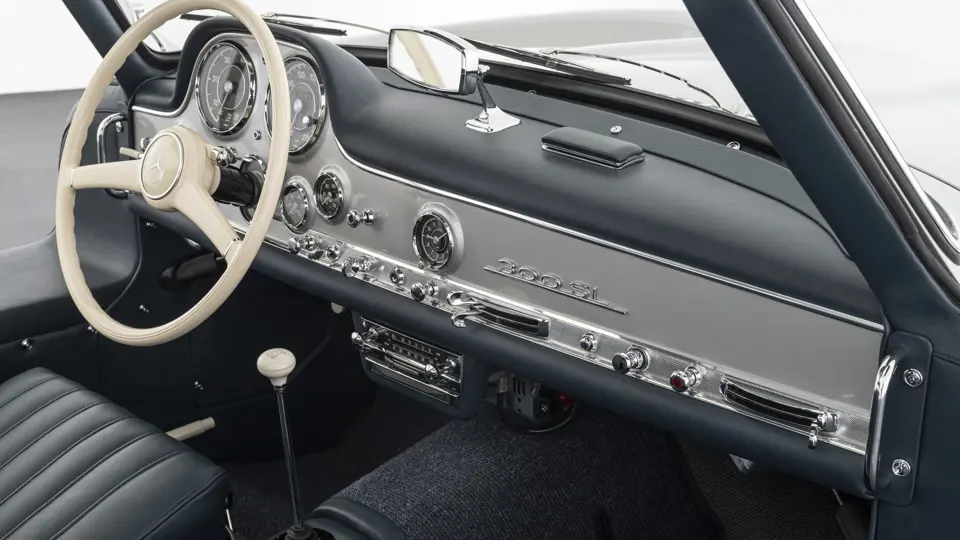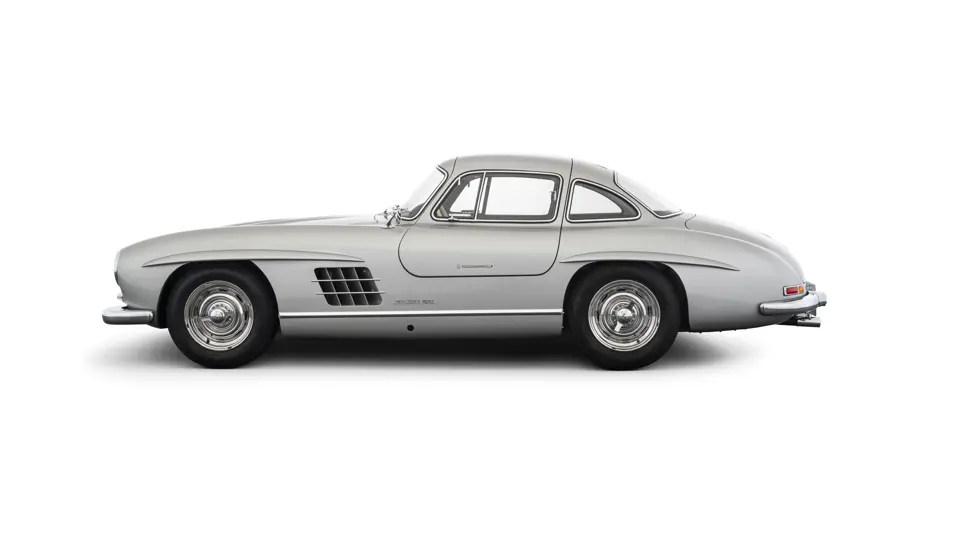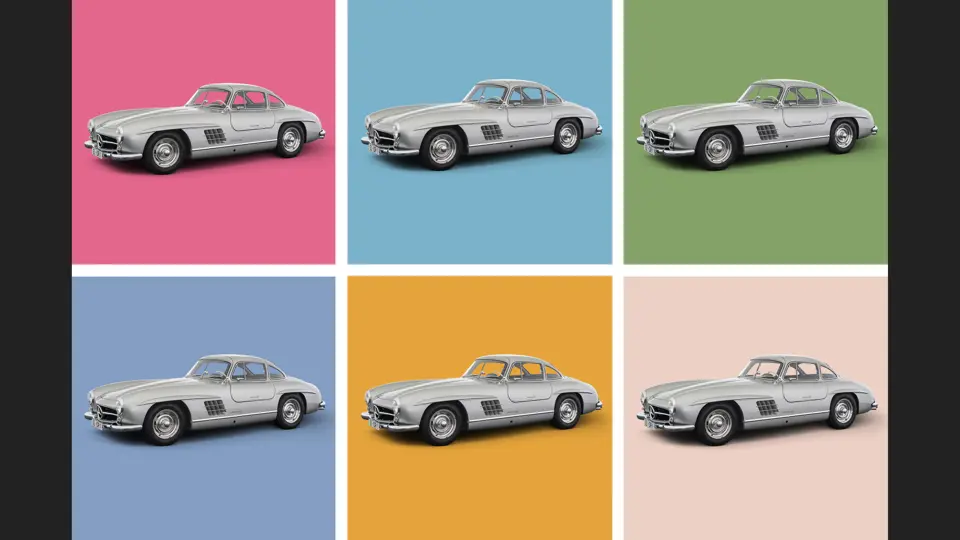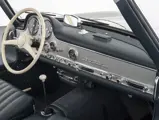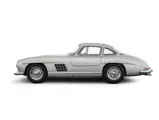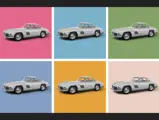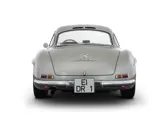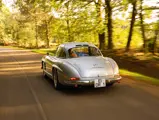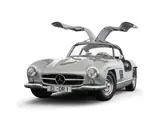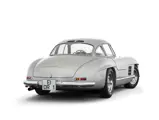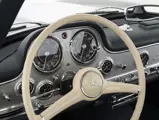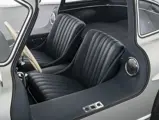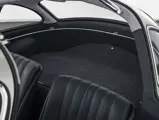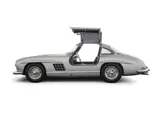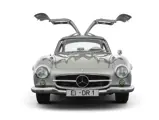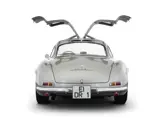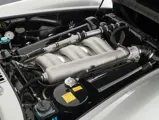1955 Mercedes-Benz 300 SL Gullwing
{{lr.item.text}}
{{bidding.lot.reserveStatusFormatted}}
- The very car that inspired the first painting of Andy Warhol’s Cars Series
- Found, acquired, and fully restored by world-renowned Mercedes-Benz specialists BRABUS
- Accompanied by a Mercedes-Benz Classic Hersteller-Expertise
- An unparalleled, significant opportunity within automotive and fine art spheres
The Art World’s Supercar
The Mercedes-Benz 300 SL Gullwing is one of the greatest sports cars of all time. Out of 1,400 units ever built, one has risen to even greater fame outside the realm of the automotive world: The original 300 SL portrayed by Andy Warhol.
The world of classic cars and the art world have a lot in common – the determination of value based on collectors’ desires, the focus on originality, condition and provenance, the exclusivity of industry events… Yet, both worlds hardly mingle, which is all the more surprising since the car has a firm place in art and some of the most famous artists have explored this subject throughout the history of the automobile, from Dalí to Lichtenstein, from Ruscha to Gursky. Maybe it has to do with the fact that a car as subject in art has got nothing to do with the real thing, or has it? Well, there is an exception, and an exceptional one at that: the Mercedes 300 SL Gullwing is both a car and a work of art. Not in the proverbial sense, in that it is considered by many to be one of the most beautiful sports cars ever built, but quite literally so. We are referring to the very car that one of the most iconic artists of all time, Andy Warhol, chose to portray in 1986, the very car which would launch what today is possibly the world’s most renowned series of art works created for a commercial brand: the Cars Series by Andy Warhol, commissioned by Daimler-Benz to chronicle the history of the automobile in celebration of its centenary anniversary.
THE CAR ITSELF- CHASSIS NUMBER 198.040.5500629
Easily identified by the car's previous registration number and documents, “Andy’s 300SL” was found and acquired by BRABUS, the world-renowned luxury mobility brand out of Germany’s Ruhr-Region. Two years later, after more than 4,500 hours of meticulous manual work as part of the BRABUS 6-Star Restoration program, this iconic Gullwing was masterfully brought back to life in accordance with original specifications and an impeccable attention to detail. The result, a level of historic authenticity which acknowledges that this is not just the most special of all 1,400 units of this model ever built, it is a piece of art history.
Before rising to international fame, this 300 SL Gullwing was sold to its first owner in Paris in August of 1955. Originally finished in Silver Grey paintwork over a blue leather interior, often thought of as the quintessential colour combination for these cars, it was optioned with the very desirable Rudge wheels, sporting ‘knock-off’ wheel nuts rather than the standard, round hubcaps. Despite being sold new in France, it would later move to Germany, where it became registered ‘EI-DR 1’ in May of 1981 when acquired by Dr. Heinz Noeth, who would go on to keep the car until it was acquired by BRABUS in 2020. The car’s German ‘Fahrzeugbrief’ (registration document) inextricably ties that registration number to chassis number 198.040.5500629, the very car presented here.
Further affirming the car’s mechanical authenticity and correctness, BRABUS submitted the car to Mercedes-Benz Classic for a full inspection which resulted in the issue of a ‘Hersteller-Expertise’, meticulously documenting the vehicles major mechanical components and confirming their authenticity against factory records. Please contact an RM Sotheby’s specialist should you wish to see this document.
Andy Warhol’s Cars Series – an unfinished work
The Cars Series would never have come into being if it weren’t for Warhol’s German gallerist, Hans Mayer, who came up with the idea the iconic automotive brand should collaborate with the world’s most iconic contemporary artist. It wasn’t met with much enthusiasm when he first proposed it to the Daimler-Benz executives, but as art world people know, art needs to be seen to exert its power, and so Mayer travelled to New York, handed his artist a book of sports cars (Frank Oleski, “Series Sports Cars from 1945-1980”, a 4,5 kilo heavy tome still cherished by car afficionados because of its outstanding photography and high quality prints), asked him to pick a photo of a car and create an appetizer – a work so enticing Daimler-Benz couldn’t say no to. The artist picked a 300 SL, the gallerist’s plan worked out, and the artist was commissioned to create 80 works based on 20 vehicles, a selection of the company’s most ground-breaking models. In the end, he only managed to finish 49 works (36 on canvas and 13 drawings) before he died unexpectedly and prematurely on 22 February 1987, in hospital following complications of surgery, which makes the Car Series an unfinished work, but this only adds to its value.
From 1988 on, works from the series, speaking to car and art audiences alike, were exhibited extensively at museums around the world, although rarely in its entirety (the last time at the Albertina Museum in Vienna in 2010), and reproductions of the works appeared in the press, in car and art magazines and in exhibition catalogues. After the BRABUS 6-Star Restoration, the 300 SL and the painting it inspired were brought together for the very first time at the Mercedes-Benz museum in Stuttgart in June of 2022.
The artist’s perspective on cars
Although Warhol never learned to drive, he was intrigued by the sculptural qualities of automobiles, and he was fully aware of the impact of cars and automotive culture on people’s lives and society in general. To him, the automobile was a symbol of freedom, a mirror of societal change and a luxury consumer item. It is no coincidence that when he had become commercially successful, he purchased a Rolls-Royce Silver Shadow, the epitome of luxury and style. Also, having no aspiration of ever getting behind a steering wheel himself, the Rolls was a car that allowed for a chauffeur – not that he needed to hire one, as some of the most famous people of his time such as Mick Jagger and Liza Minelli would take it upon them to drive him around which would permit him to just sit back and stare out the window and watch the world outside float by, just like in a film.
A trained illustrator, Warhol knew that the design of a product, be it a dress or a car, starts with a sketch, with commercial art if you will, something which he didn’t look down upon but on the contrary, aspired to create himself. At a time when he was already firmly established as a conceptual artist, he still referred to himself as a “commercial artist”, being infatuated with consumer products from shoes to cars. His early drawings of cars from the 50ies show spacious Cadillac and Plymouth limousines, American Dream cars, counterparts of the cramped working-class apartment of his early childhood, perfect objects of desire. Warhol loved things that were wanted but not needed, just like art, but not because he was a shallow character. In the 60ies his fascination with tragic frontpage news included culling images of car accidents from newspapers which resulted in the “Car Crash” paintings, one of those body of works that reveal a darker side of the artist who would even go as far as to depict suicide. These works were not intended to provoke (though they certainly did) but to show the equivalency of beauty and horror and their twisted interrelation – and they made sure Warhol wouldn’t be perceived as a harmless fluffy pop artist by adding an element of depth to his work that resonates with his entire oeuvre.
Then there were the commercial commissions, starting with a spread for Harper’s Bazaar in 1962 to celebrate Cadillac as America’s most iconic car, resulting in the key work “Twelve Cadillacs”, where Warhol fully established that repetitive principle and grid structure which became a most recognizable feature of his work. There was the BMW M1 that reportedly took the artist 20 minutes to paint and possibly inspired him to return to painting with a handheld brush, and that became one of the world’s most famous “art cars”, a term used to describe cars modified through an artistic intervention that Warhol himself would never have used as it would have made no sense for him to separate the medium or the object from the act of making art (and neither would he have applied the term “car art” which stands for a genre of even more questionable artistic quality than what “art cars” represent; it is important to note that the Cars Series falls into neither category but, although it depicts cars and is fun to look at, is considered a serious and critically acclaimed body of work).
“I want to be a machine”
And then there was Warhol’s fascination with machines and technology in a broader sense. He once famously declared, “I want to be a machine”, and while he didn’t get a robotic double of himself (to replace him in a stage show) produced until 1981, he aimed to mechanise his practice early on in his career, using production technologies such as screen-printing in hope the idea of industrial mass production would one day become the foundation of art production as well. His idea of authorship and artistic expression didn’t involve the hand of the artist, he didn’t want his art to look “handmade” even if it was, just like a car shouldn’t look hand-made even if making it was all about manual skills as was the case with both the manufacturing and restoration of the 300 SL. “Handmade” stands for uniqueness, but to Warhol, there was no contradiction between uniqueness and industrial mass production. Uniqueness was not a question of scarcity but of presence, and presence was achieved through reproduction and repetition, which led to recognizability and ultimately, fame. That’s why he loved celebrities, iconic brands and objects, and obviously the 300 SL Gullwing suited his intentions perfectly the way it represented the essence of a sports car, not just in form but also in terms of the narrative contributing to its iconic status with details such as being the fastest street-legal sports car upon release.
No difference between reproduction and original
Given the importance Warhol ascribed to the principle of reproduction, selecting motifs from photos was crucial to his practice. Not that he wasn’t capable of capturing anything before his eyes (his drawings give ample proof of that), but copying from a reproduction meant to honour the original which with each reproduction would become more recognisable, more iconic, more real. All of Warhol’s celebrity portraits are based on polaroid photos. At one point America’s most famous portrait painter, he was swamped with requests from celebrities who knew that being portrayed by him would only contribute to their fame. His sitters sometimes spent an entire day at his studio not for live painting sessions but to have their Polaroids taken which the artist would then turn into silkscreen paintings.
Warhol didn’t seem interested in bonding with his subjects, declaring his selection criteria to be quite simple, “They have to be beautiful, rich or famous”. And he didn’t seem to make any difference between people and inanimate objects. The selection of a subject was already an act of art-making, and a soup can could make an equally suited subject as Marilyn Monroe. Once reproduced as an art work, the subject itself would be perceived as art, the best-known example for this phenomenon being the Campbell’s Tomato Soup that one can’t buy a can of without thinking of the artwork.
Yet, some works reveal that the artist did relate to his subjects in different ways after all. One of his famous friends, Jerry Hall, claims she knew how to tell whether or not he liked a sitter (“If he liked you, he would paint the lips accurately, if he didn’t, he’d paint over the lip-line”), and while there is no proof of that, in the case of the Cars Series it is easy to note some substantial differences in how the artist portrayed each vehicle. Take the grid painting of the Silver Arrow which he mockingly made to look like a bunch of stewing hens, or the C111 which looks quite menacing, like a poisonous insect ready to attack. The 300 SL he treated with respect, carving out its essential form and ensuring its recognisability.
At the time of his death, Andy Warhol was ill but highly productive. He had recently produced a body of work based on “The Last Supper” by Leonardo da Vinci, and generally turned to religious subject matter. His work appeared more pensive and severe, possibly influenced by the looming AIDS crisis and growing awareness of his own fragility. In this context, dealing with luxury consumer products might have seemed banal or frivolous, but in the artist’s view, what was significant didn’t have to be meaningful, and everything was interrelated anyway, so a painting of a car was just as important as a painting of Jesus.
The Mercedes-Benz 300 SL Gullwing had been considered an icon long before began his Cars Series, but this particular 300 SL is not just an iconic car, it is proof of the power of art. Once you’ve seen the art work, when looking at the car you cannot unsee the aura created by the artistic interpretation of the object. Of course, this would go for any of the units still around, but this particular one is the one responsible for elevating the 300 SL to the level of art. The other ones are fungible, but this one is nonfungible, the one and only 300 SL Andy Warhol decided to immortalize.

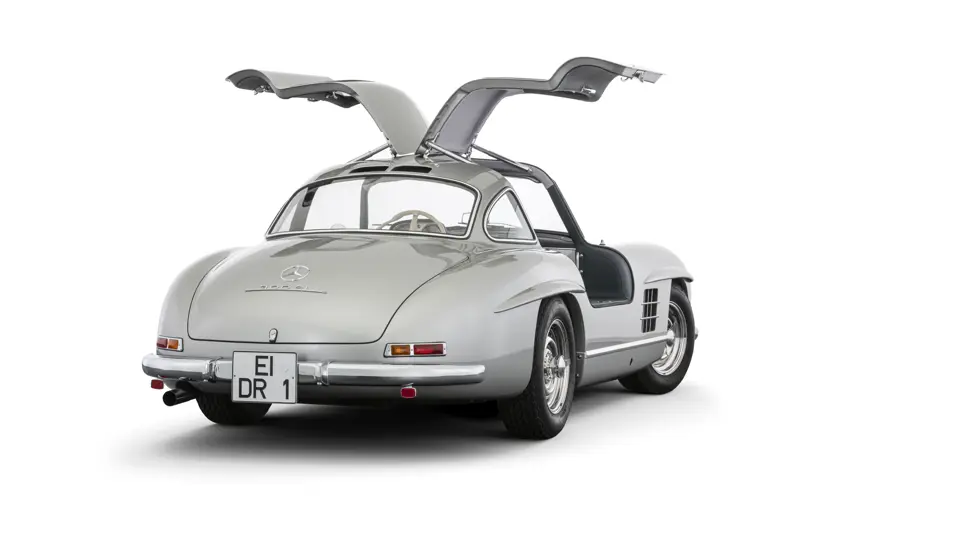


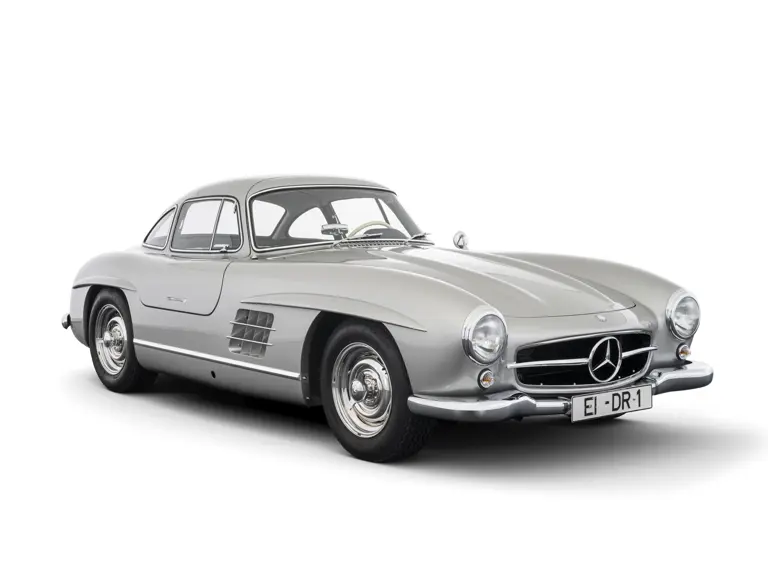
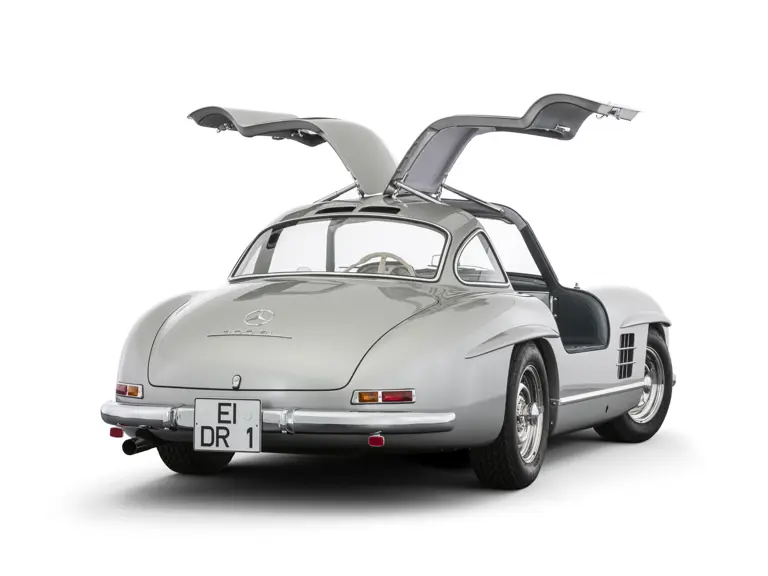
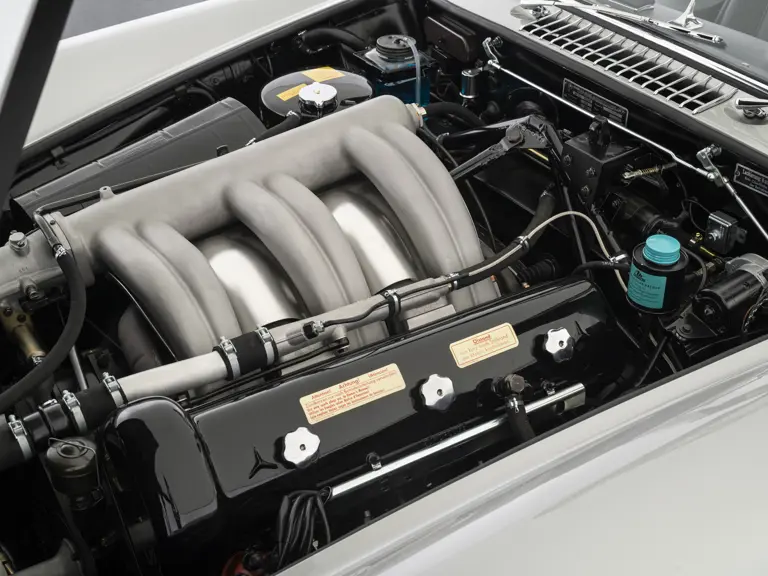
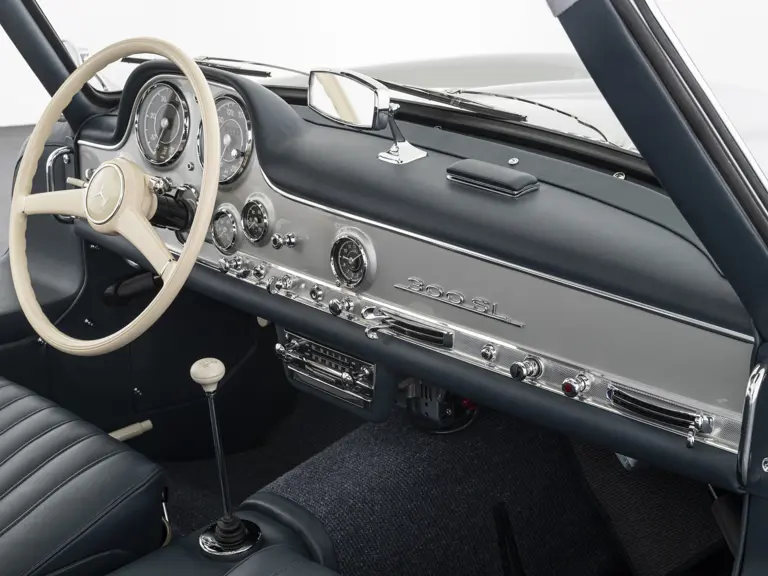
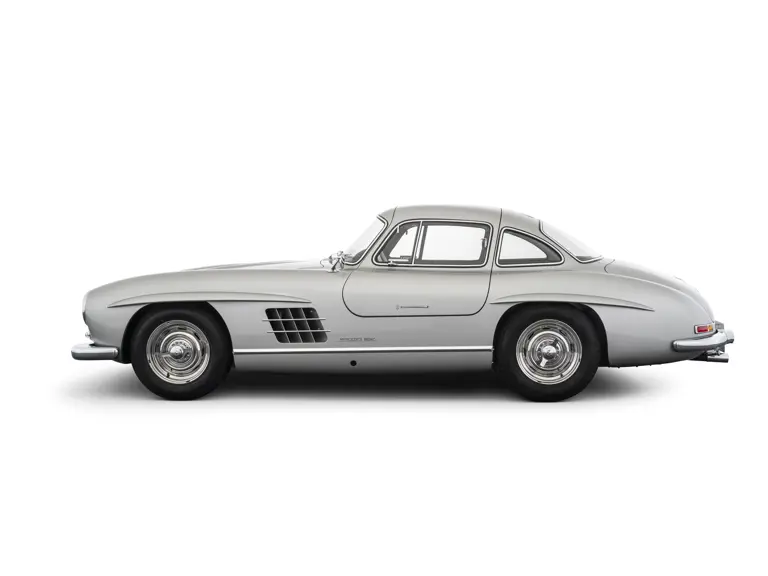
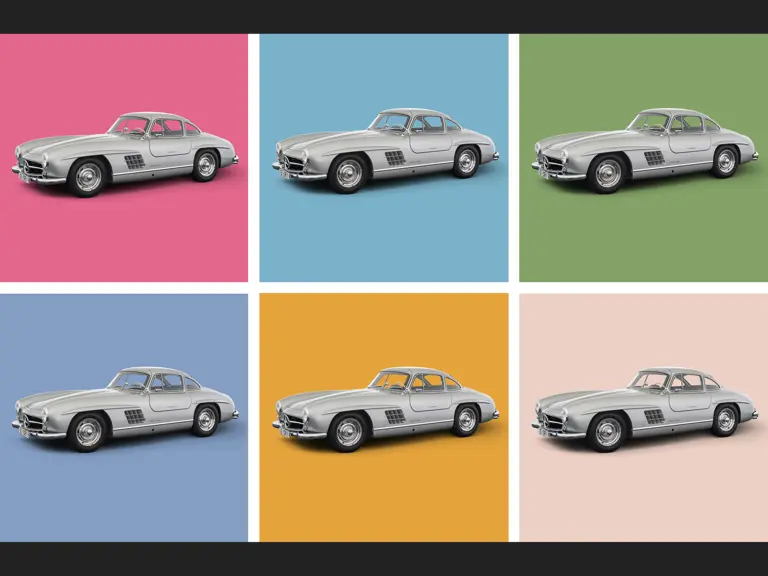
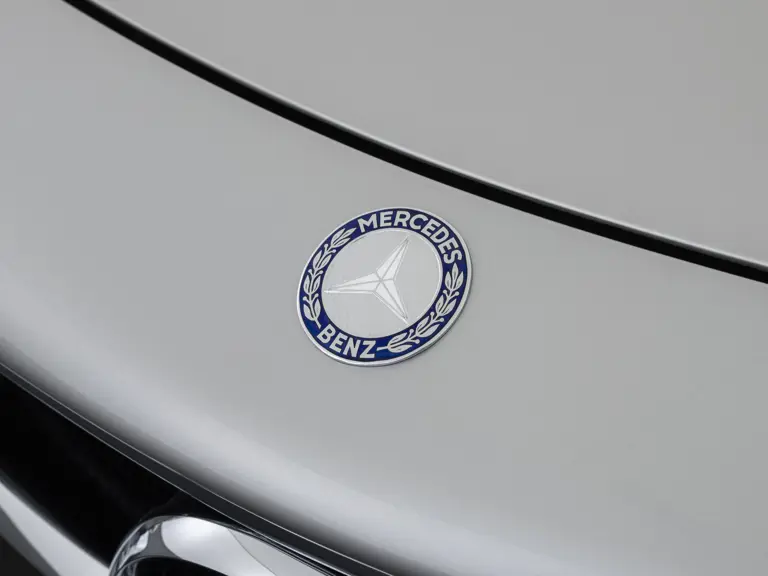

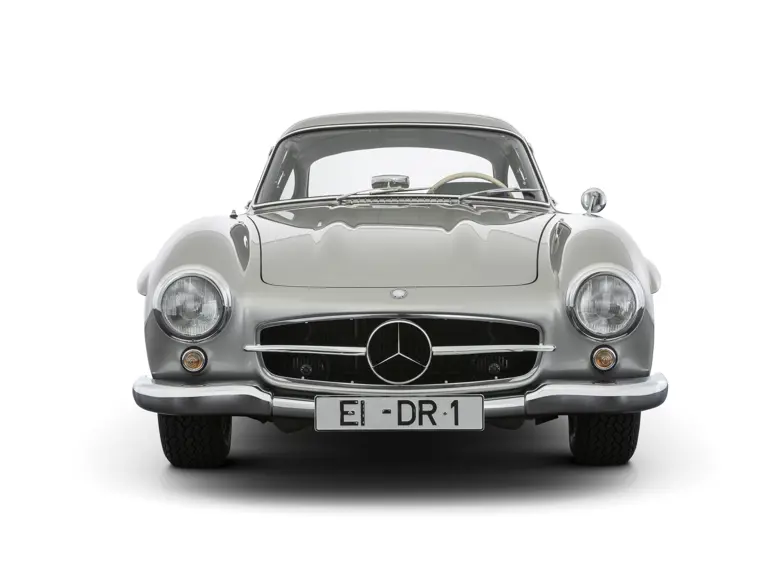
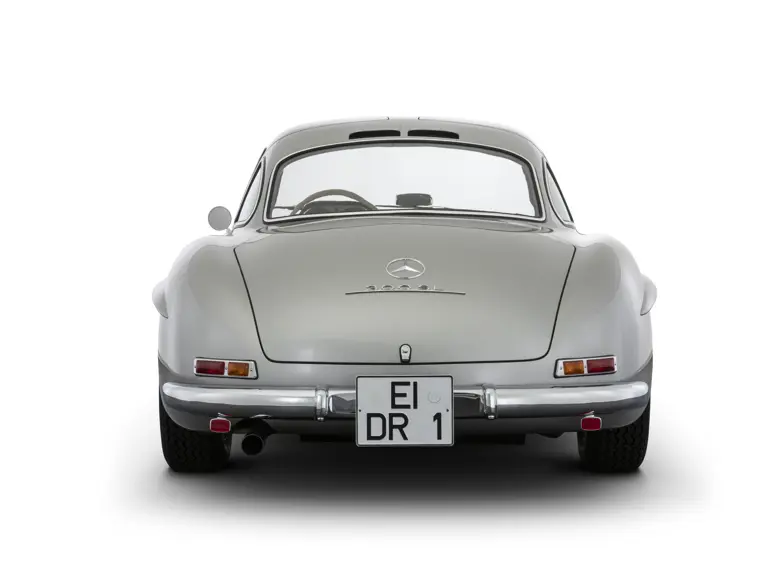
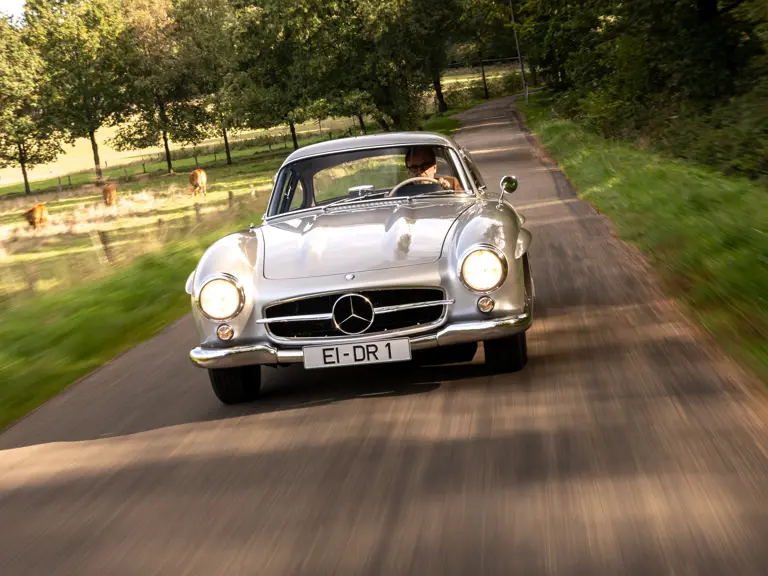
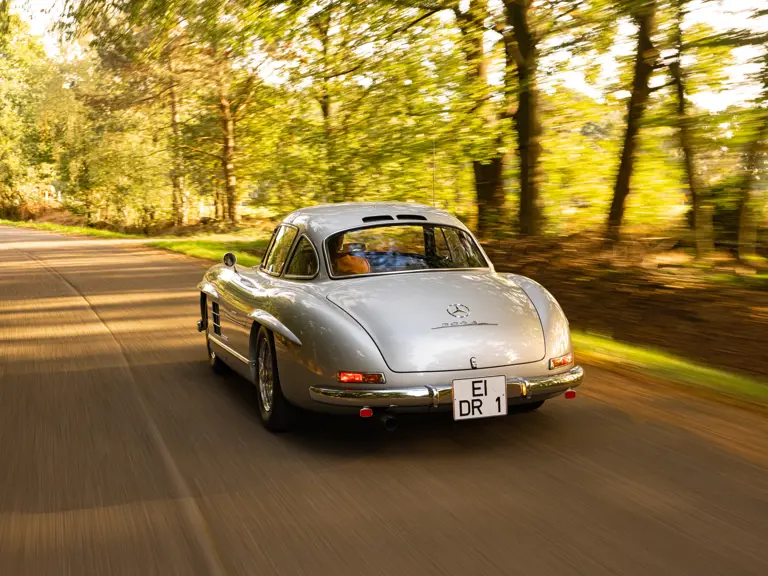
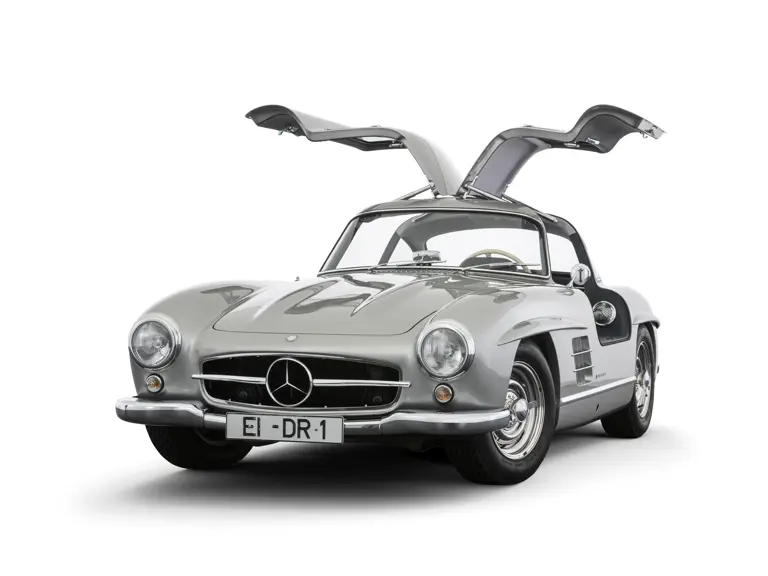
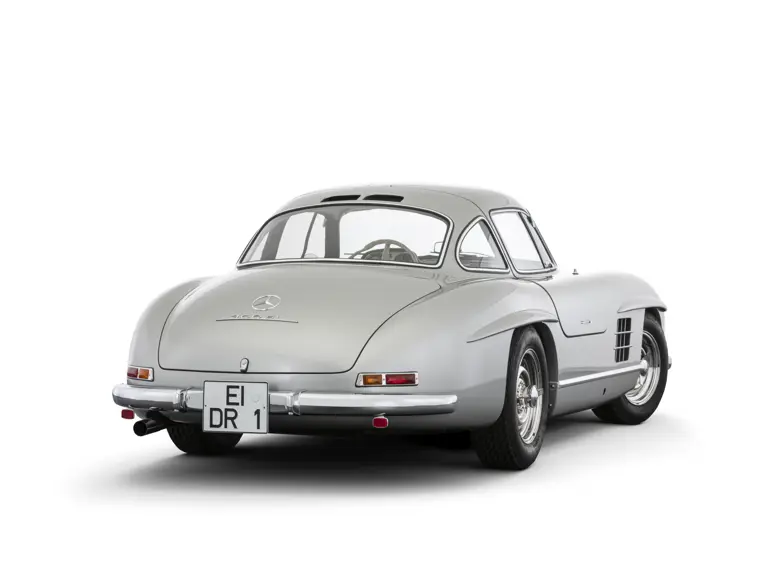
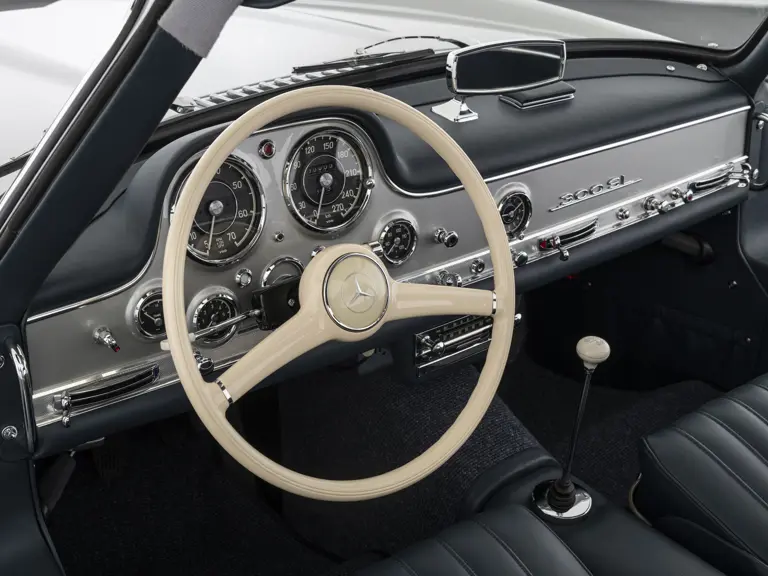
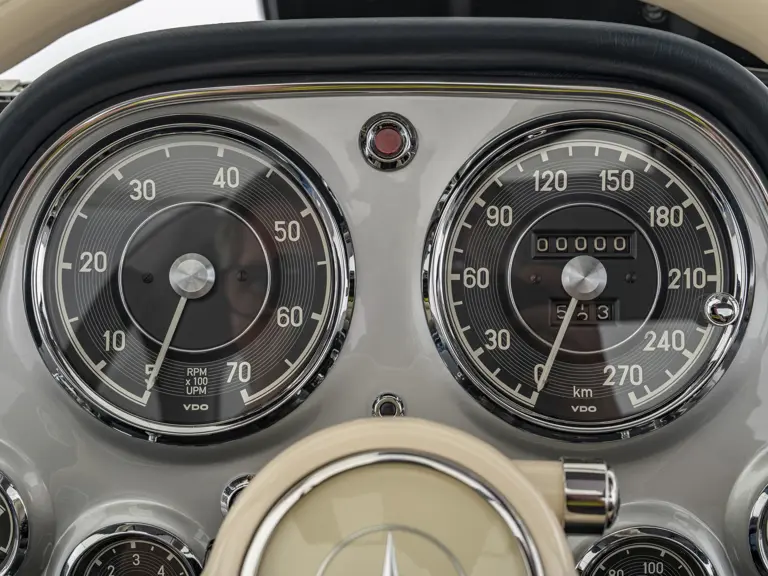
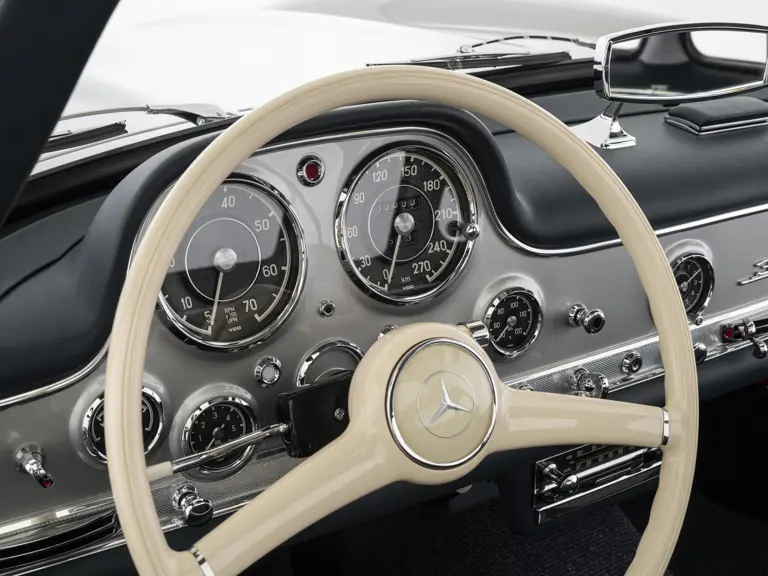
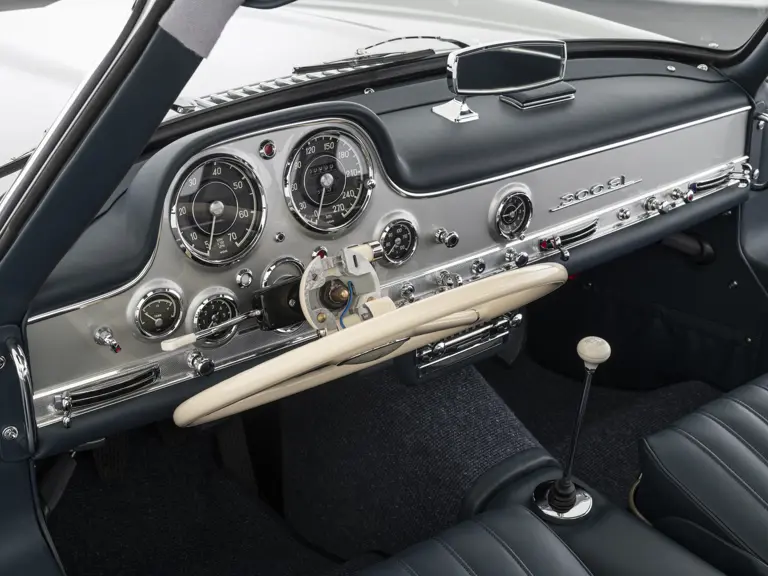
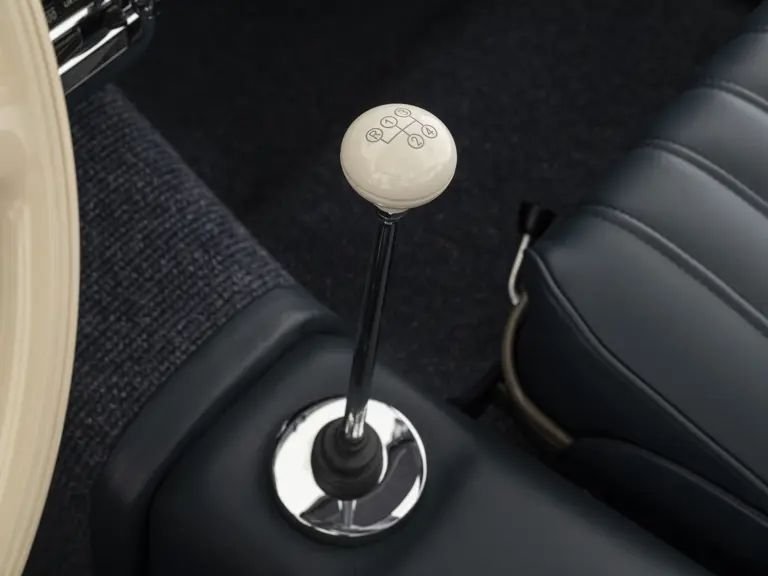

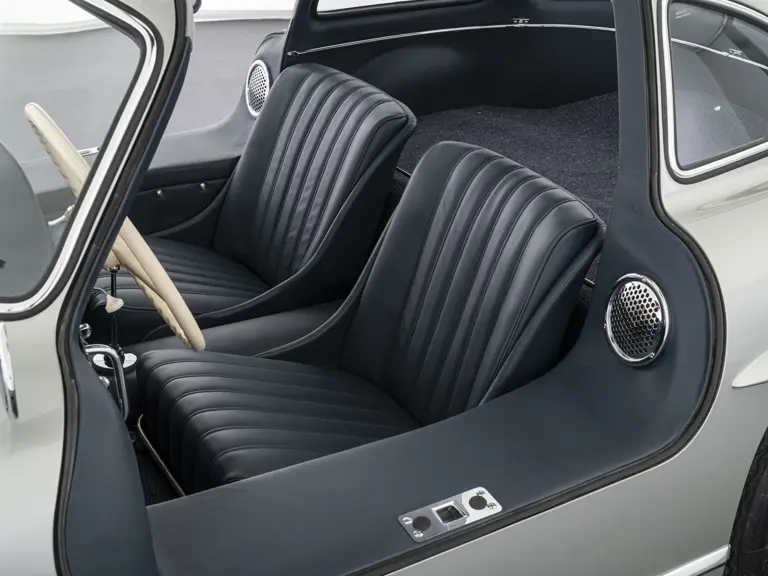
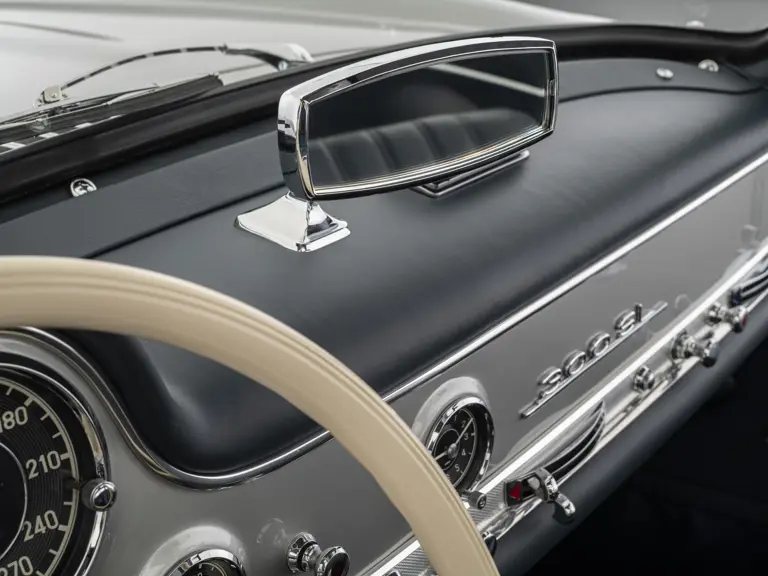
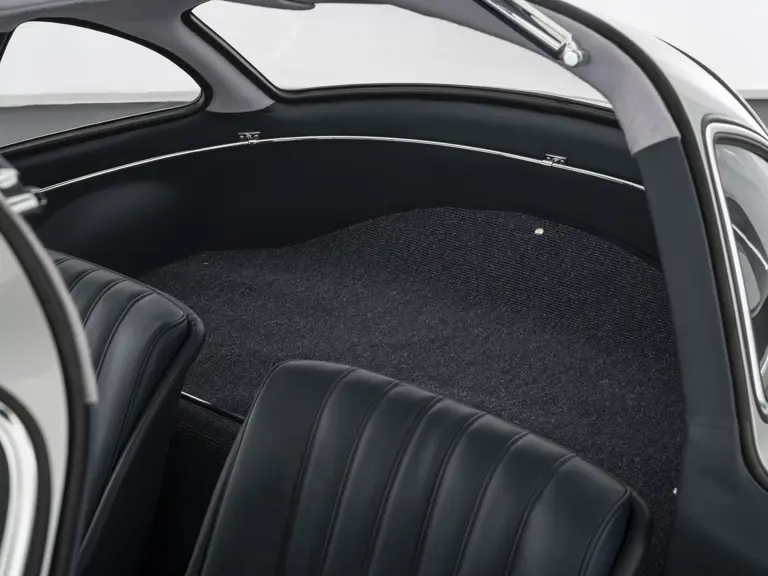
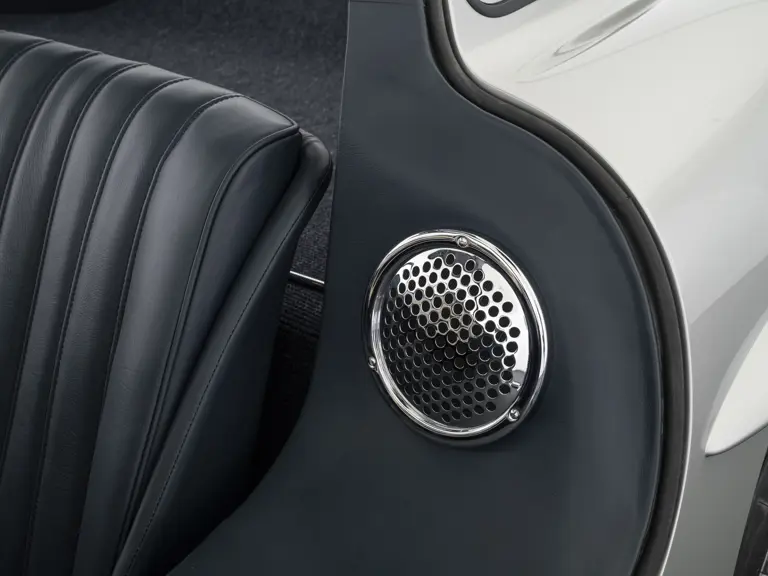

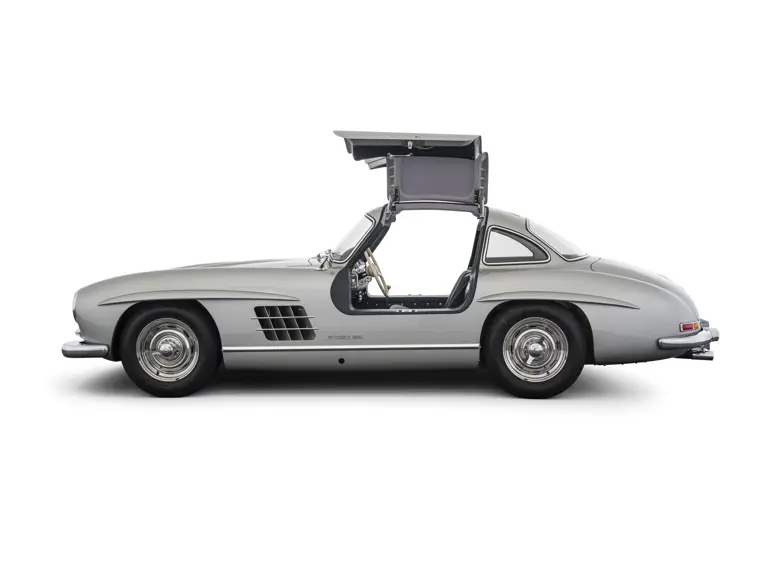
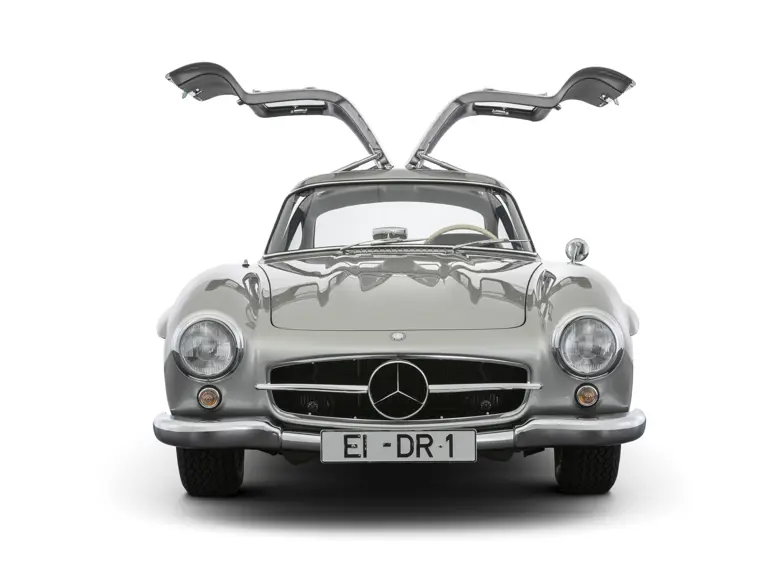
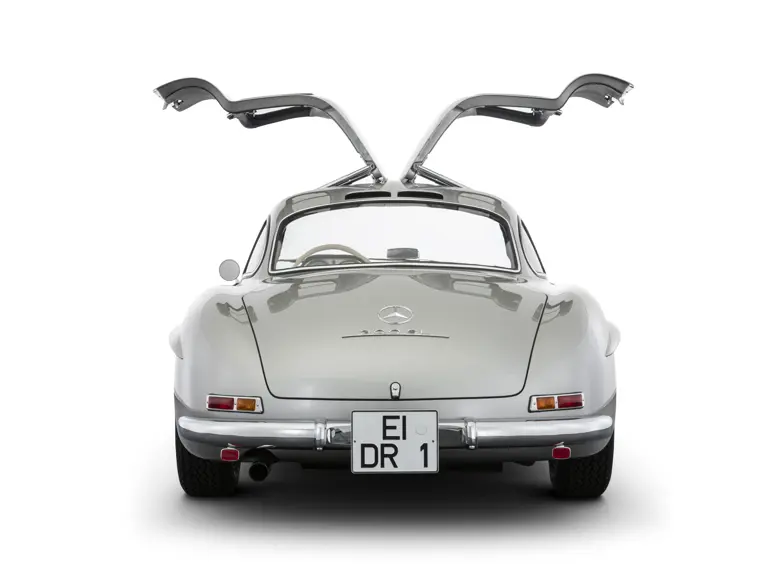
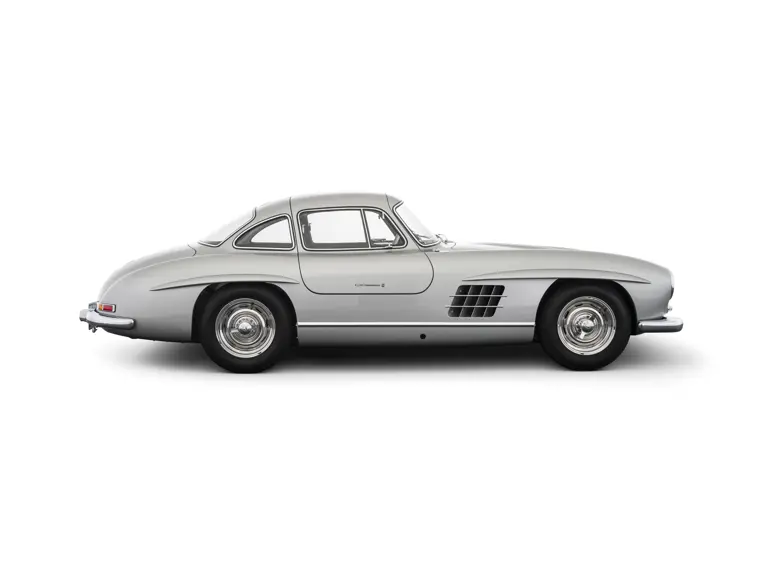
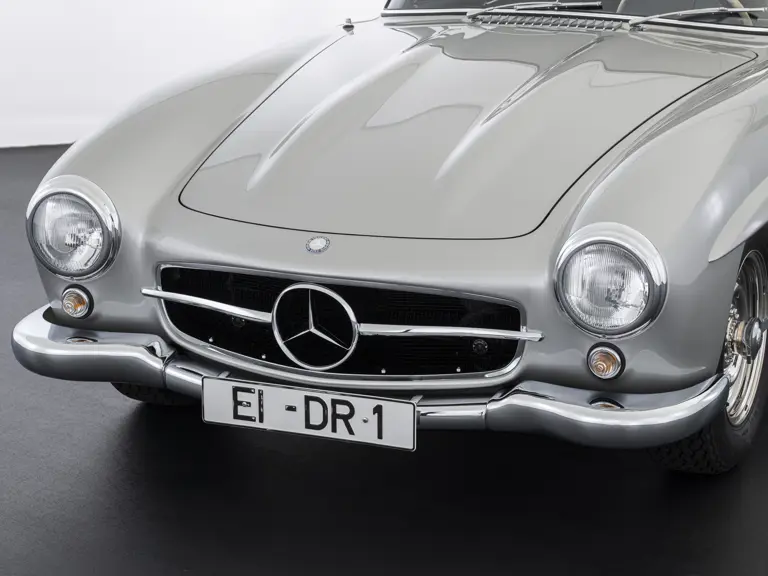
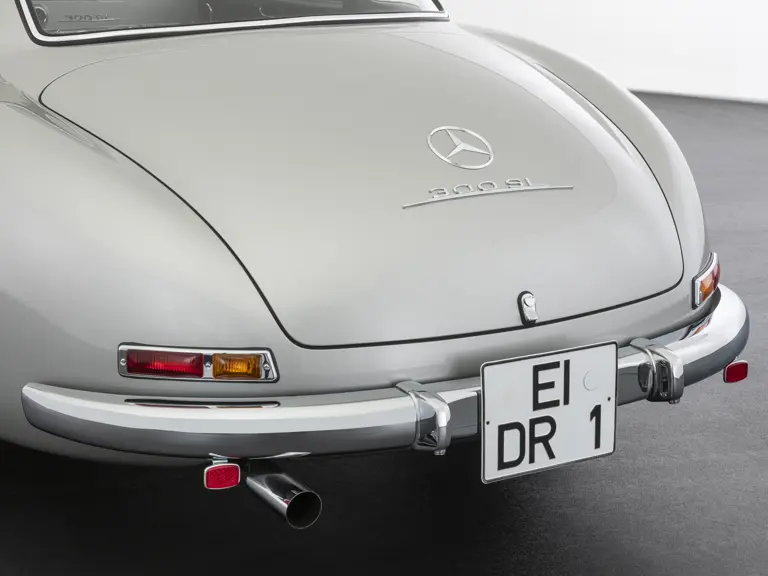

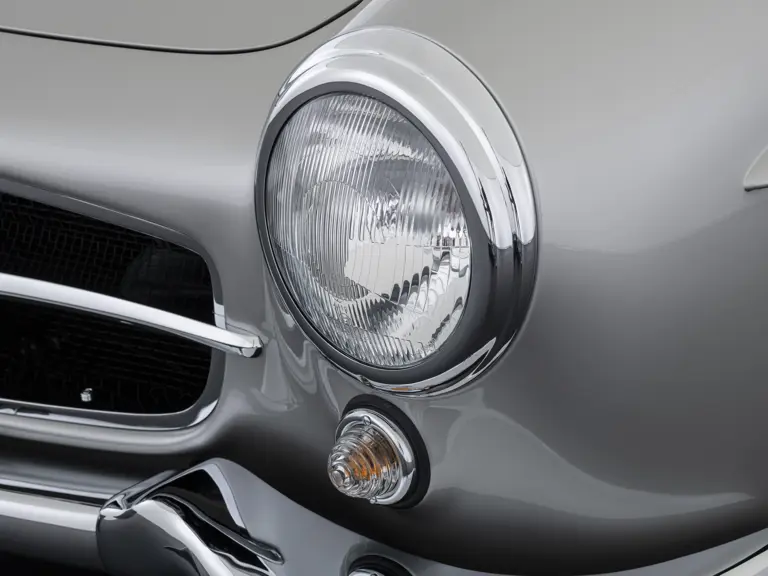

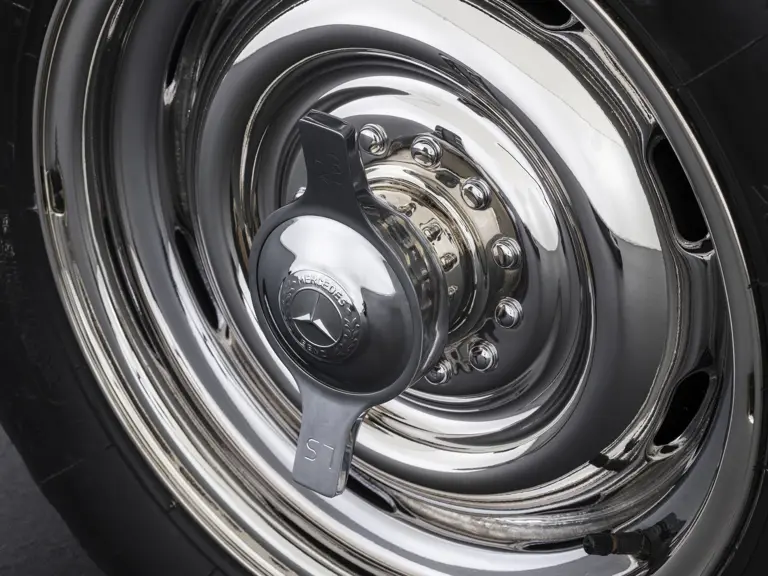
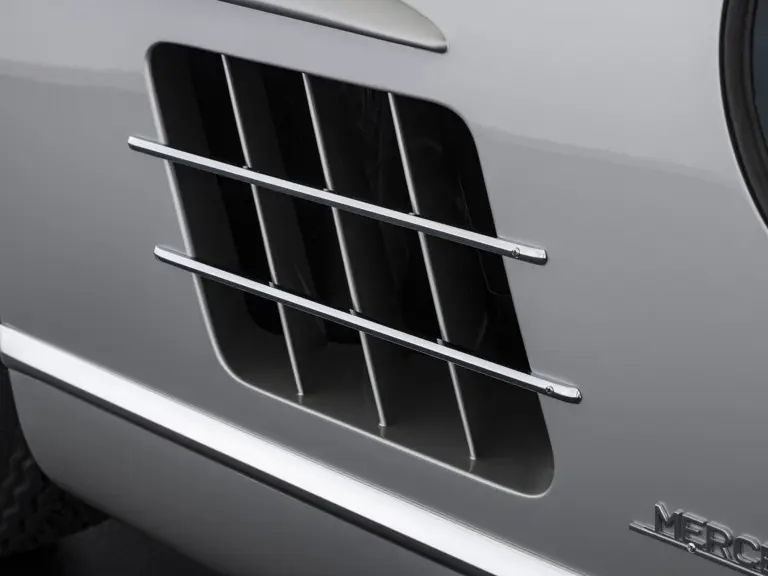
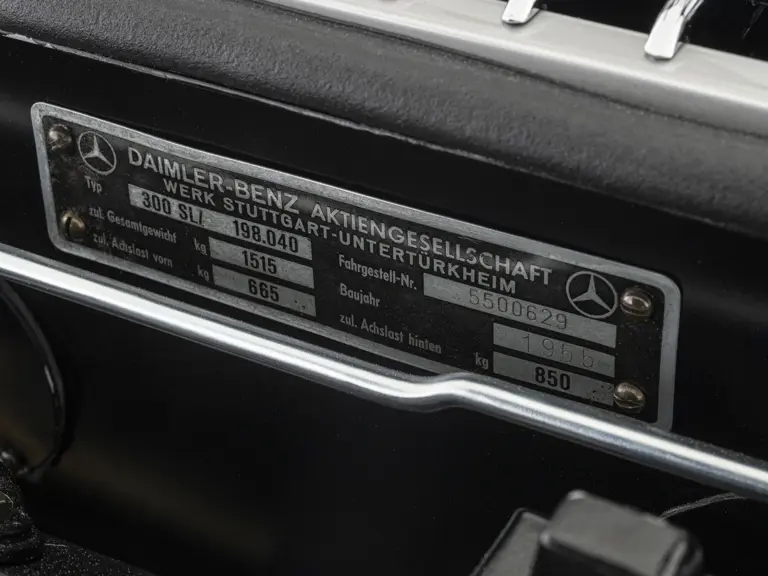
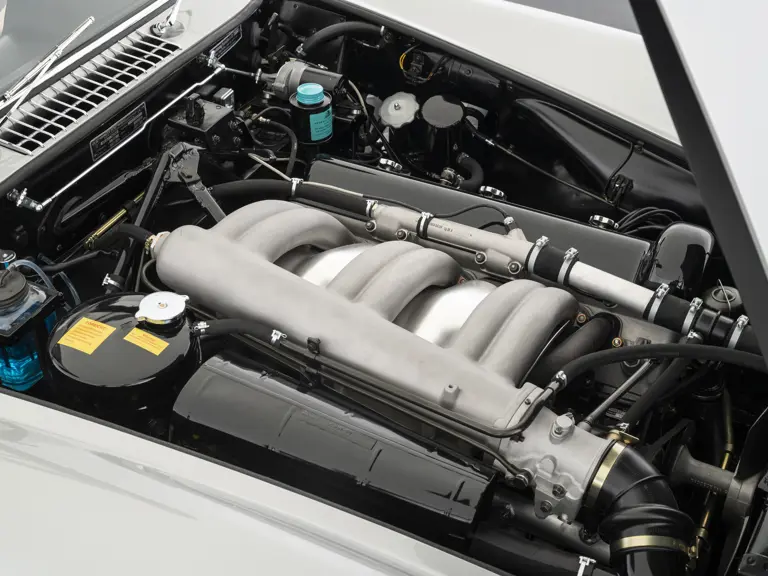
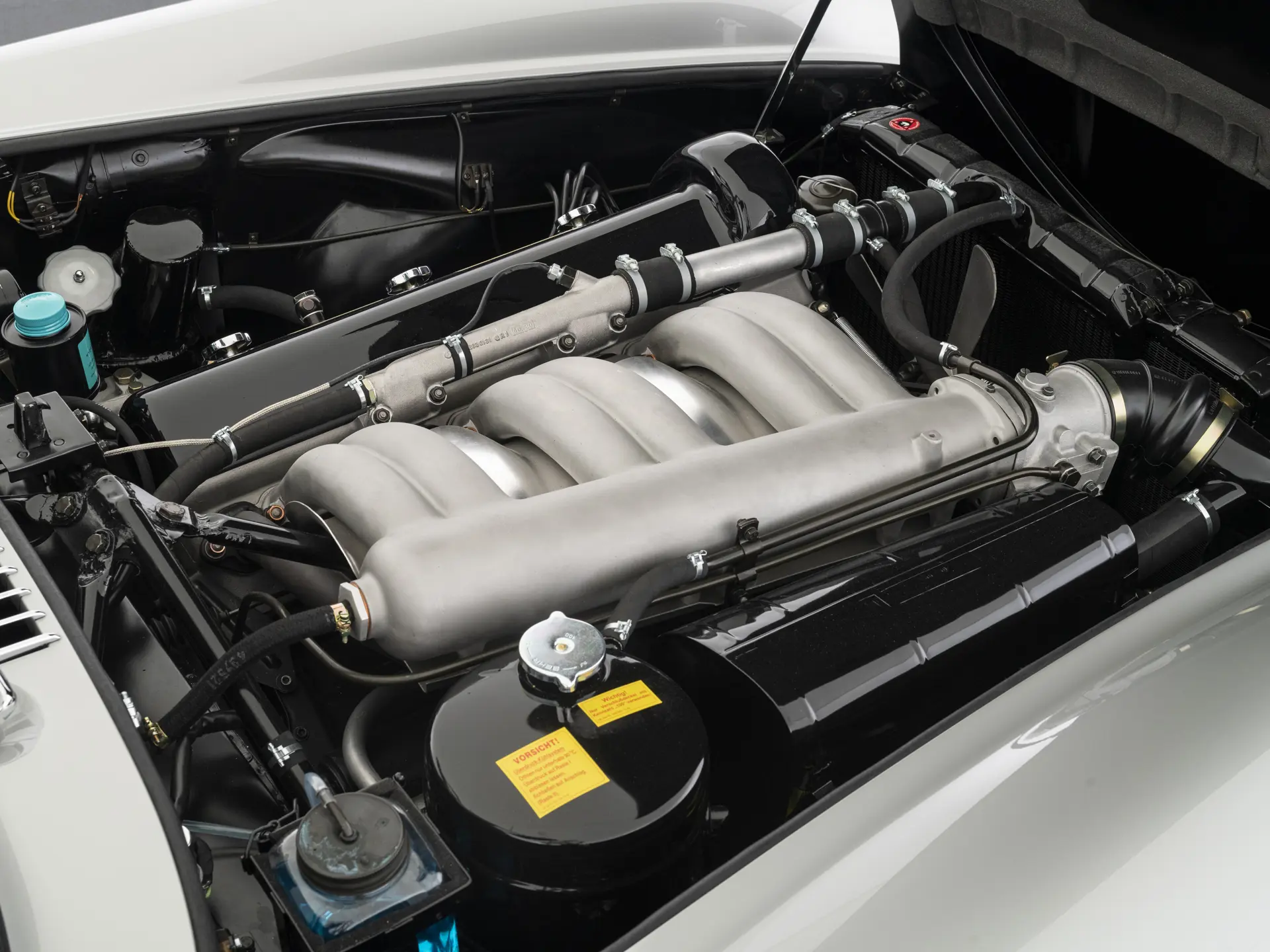

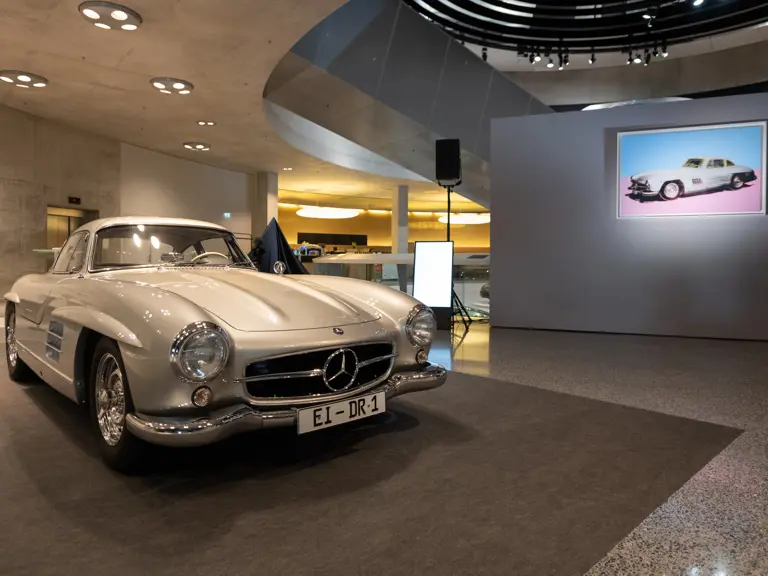
 | New York, New York
| New York, New York
